 |
 |
 |
| |
Subclinical Heart Disease is Greater Among HIV+ vs HIV- & Increases with Age in MACS
|
| |
| |
Reported by Jules Levin
CROI 2013
Age & Heart Disease
"the purpose of this study was to measure subclinical coronary atherosclerosis in HIV-infected and HIV-unifected men to determine if there are differences in the prevalence & extent of coronary artherosclerosis, and the associations between age & coronary atherosclerosis......(1) "after adjustment for CVD risk factors, HIV-infected men compared to HIV-uninfected men had a greater prevalence of - coronary artery calcium - non-calcified plaque - any plaque and a greater extent of non-calcified plaque, (2) Noncalcified plaque prevalence rose with age in HIV-positive men but not HIV-negative men. Prevalence of stable calcified plaques rose steadily with age in both HIV-positive and negative men."....from Jules: despite the VA and DAD orals finding age was not associated much if any with developing heart disease, that is with increasing age in HIV+ risk for heart disease did not increase as one gets older, despite this from DAD & VA cohort epidemiologic studies, this study presented by Wendy Post from Hopkins found age was associated with increasing risk, as one gets older the risk increases and increasing risk occurs as one gets older....Grinspoon said in his presentation that immune activation "is very strongly related", the average age here is 44 in this study & we are looking at subclinical disease, in this young population the affects of smoking & lipids abnormalities have not yet have time to cause serious heart disease by immune activation & inflammation are the drivers of this subclinical disease concern, "even in virologically suppressed patients this is occurring"....in the Q&A after the presentation Paul Sax raised an interesting question, the patients in this study had been on ART for a average of 13 years, so Sax asked what about patients who started ART much more recently who used safer ARTs with less side effects related to lipids etc and Grinspoon said it was an interesting question that should be looked at, in poster 758 they find elite controllers had a coronary artery calcium issue, but my comment is Grinspoon found in the multivariate analysis that the immune activation marker sCD163, which is a monocyte activation marker, is significantly associated with subclinical disease controlling for traditional CVD risk factors/CV & HIV-specific parameters, so immune activation I believe is associated with HIV not the ARTs one is taking.
noncalcified plaque prevalence continued to rise with age in HIV-positive men, while remaining largely stable in HIV-negative men:
-- 40 to 44 years: 22% HIV+ versus 24% HIV-
-- 45 to 49 years: 56% HIV+ versus 58% HIV-
-- 50 to 54 years: 73% HIV+ versus 54% HIV-
-- 55 to 59 years: 80% HIV+ versus 76% HIV-
-- 60 to 64 years: 67% HIV+ versus 54% HIV-
-- 65 to 70 years: 92% HIV+ versus 53% HIV-
Post summarized "after adjustment for CVD risk factors, HIV-infected men compared to HIV-uninfected men had a greater prevalence of
- coronary artery calcium
- non-calcified plaque
- any plaque
and a greater extent of non-calcified plaque
ASSOCIATION WITH AGE:
non-calcified plaque was associated with advancing age in HIV-infected men, but not in HIV-uninfected - significant age HIV serostatus interaction"
Age Raises Rate of Dangerous Coronary Artery Plaques in HIV+ But Not HIV- MACS Men - written by Mark Mascolini - (03/05/13)
Among HIV-infected patients (versus non-HIV-infected controls), the risk of myocardial infarction (MI) is approximately twofold [6], and the risk of sudden cardiac death is approximately four-fold [7] (from recent Grinspoon paper in AIDS
we demonstrated a particularly high prevalence of noncalcified coronary atherosclerotic plaques in the HIV-infected group
The present investigation builds on our previous findings of increased non-calcified coronary plaque burden among HIV-infected patients without clinically apparent heart disease (versus non-HIV-infected controls with similar traditional cardiovascular risk factors). Specifically, we now demonstrate that relatively young HIV-infected patients with well-controlled disease have not only a higher burden of plaque but also a higher burden of vulnerable plaque relative to controls with similar traditional cardiovascular risk factors. Specifically, among HIV-infected group (versus controls), a higher prevalence of patients with at least one: 1) low attenuation plaque, 2) positively remodeled plaque, and 3) high-risk 3-feature positive plaque was seen.
Coronary Artery Danger Signals More Common in Young HIV+ Men Than HIV- Men - written by Mark Mascolini - (03/05/13)
Three signals that coronary artery plaques may rupture proved significantly more prevalent in young HIV-positive men with relatively low cardiovascular risk than in a matched comparison group of HIV-negative men [1]. The study at Massachusetts General Hospital (MGH) is the first to pinpoint plaque danger signals with coronary computed tomography angiography (CTA) in HIV-positive men.
Link to webcast:
http://webcasts.retroconference.org/console/player/19420?mediaType=podiumVideo
from the MACS study presented by Wendy Post, these slides show the age interaction with subclinical heart disease, that risk increases by getting older in HIV+ men in MACS:







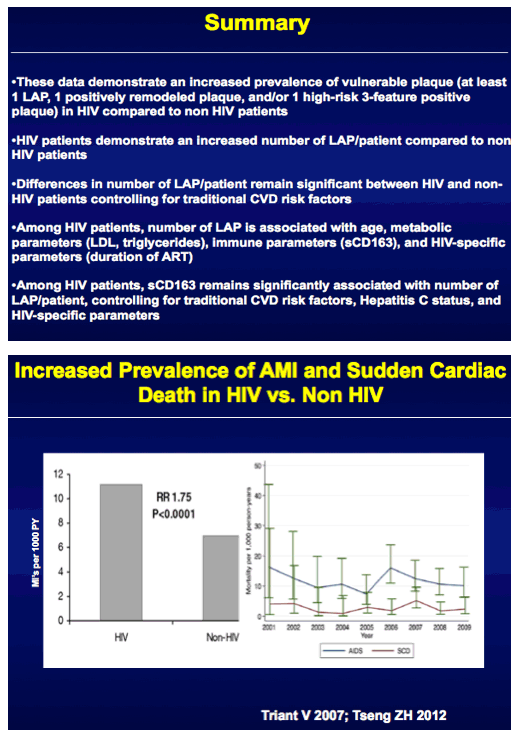
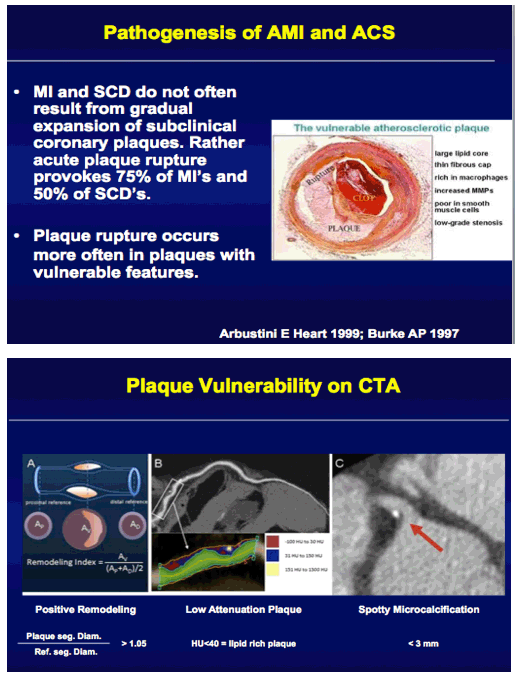
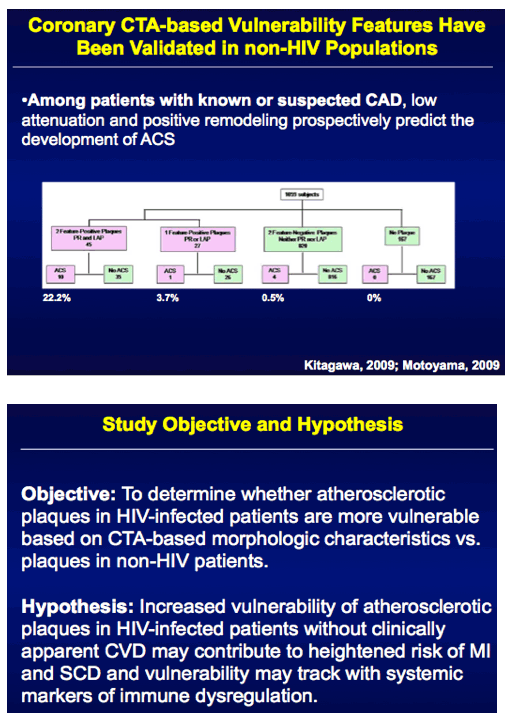
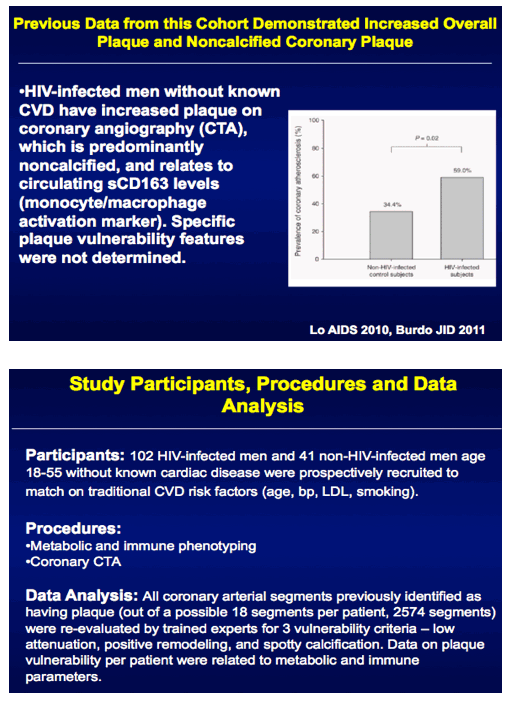
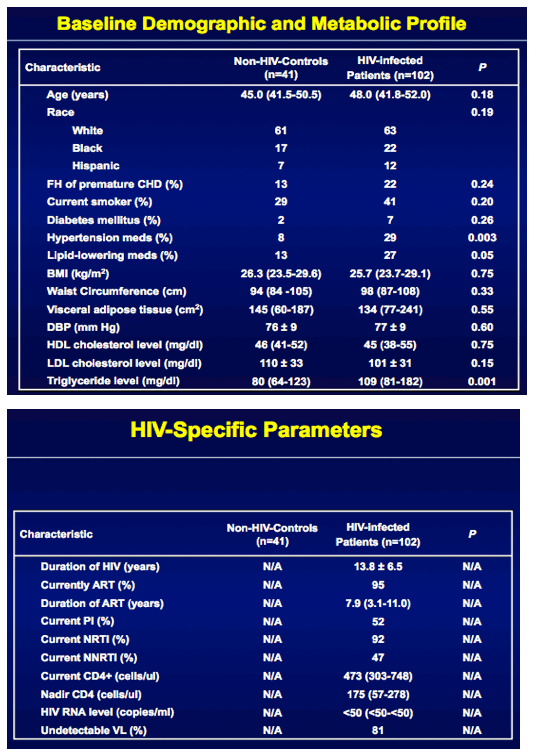
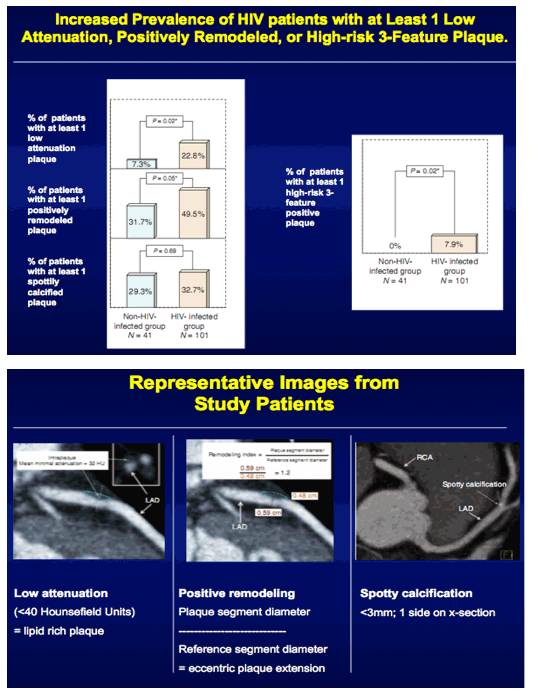
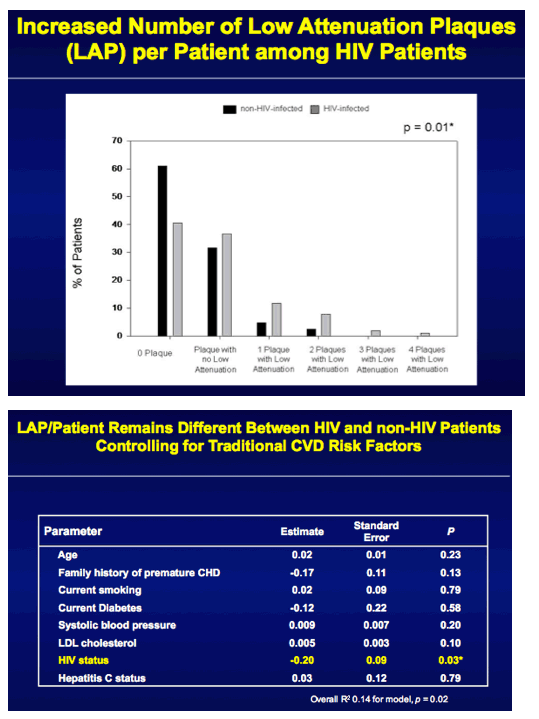
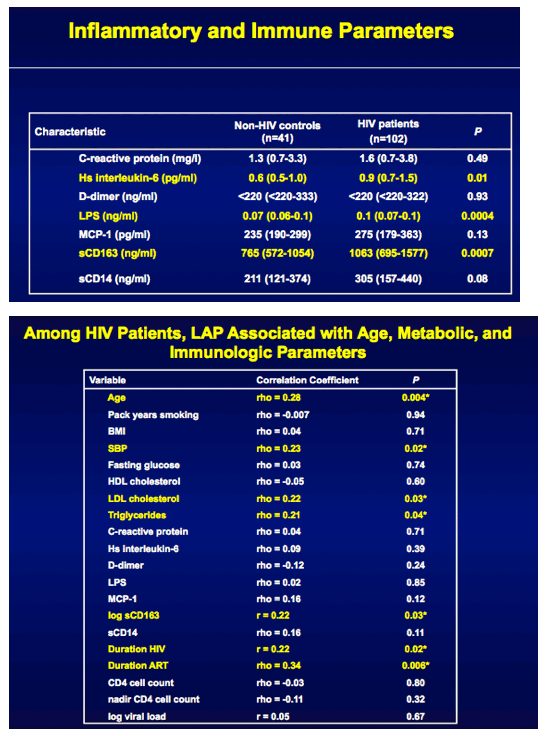
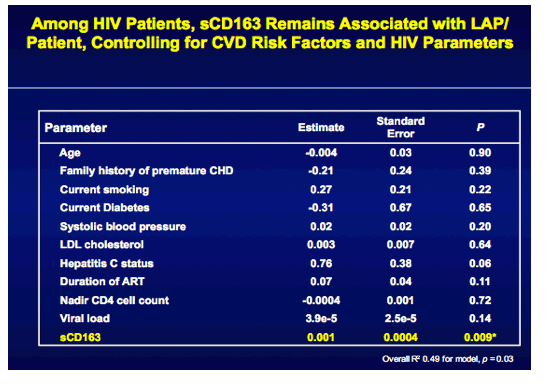
|
| |
|
 |
 |
|
|